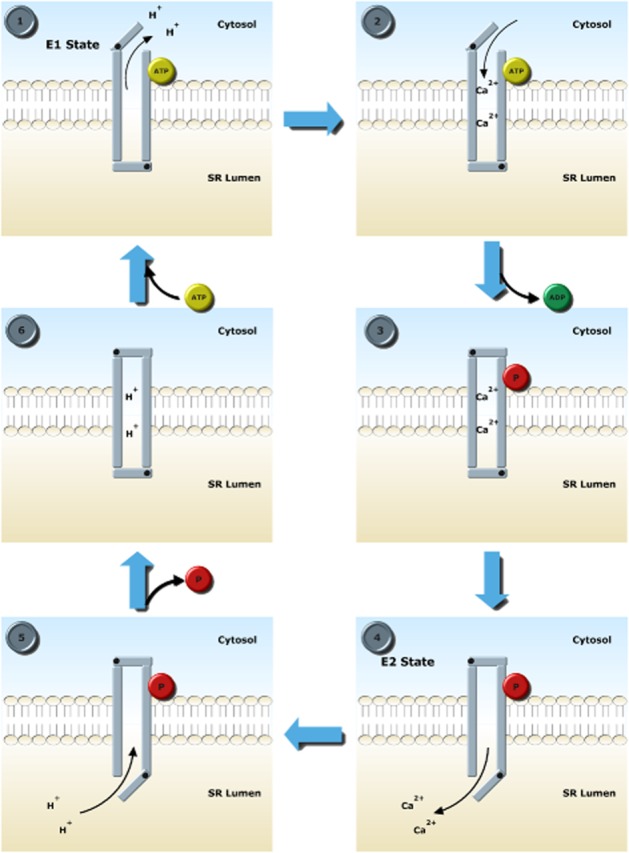Figure 2.

E1-E2 Ca transport scheme via which SERCA2a transports Ca into the sarcoplasmic reticulum (SR) lumen. Stage 1: In the E1 conformation, the high-affinity Ca2+ binding sites are accessible by the cytosol. Two protons leave the pump as ATP binds to allow access to the cytosol. Stage 2: 2 Ca2+ ions bind with high affinity. Stage 3: Bound ATP is used to phosphorylate Asp351, causing a conformational change which occludes Ca2+. At this point, the pump is in the high-energy unstable phosphointermediate condition. Stage 4: A further conformational change brings about the E2 form of SERCA2a where the SR lumen is accessible to Ca2+. Ca2+ ions are released because of a lower affinity in the E2 state. Stage 5: Protons replace Ca2+. Stage 6: Asp351 is dephosphorylated, bringing the pump into a low-energy intermediate form, which is unstable and returns to the E1 state.
